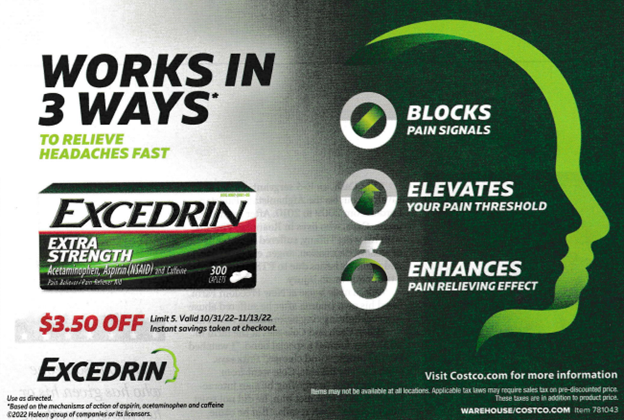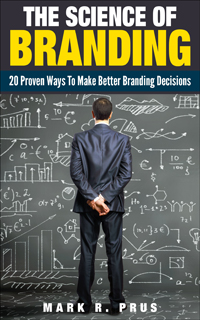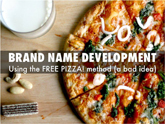3 Really Is the Magic Number
If you can’t make your point in 3 then start over

Schoolhouse Rock fans already knew this, but it took a January 2014 publication in the Journal of Marketing for marketers to get confirmation.
The publication was titled: “When Three Charms but Four Alarms: Identifying the Optimal Number of Claims in Persuasion Settings.” The authors Suzanne B. Shu & Kurt A. Carlson conducted a study where consumers were shown messaging that consisted of one, two, three, four, five and six positive claims about a product such as shampoo or a breakfast cereal or even a politician. For example, in the case of the “six claim” breakfast cereal situation, participants were told:
Imagine that you are shopping at the grocery store and you notice that a brand of cereal you sometimes buy has a new package design. As you look closer you discover that they have also changed the product itself. The packaging says that it is now:
“Healthier, better tasting, crunchier, sweeter, organic, and with higher quality ingredients.”
After the participants saw the messaging, the researchers measured the attitude of each respondent to gather positive or negative impressions. They also measured the amount of skepticism the respondent had about whether the messaging was intended to inform them or to push them to choose a particular product.
The results clearly demonstrated that those who read three claims rated all of the subjects of the ads (e.g., breakfast cereal or politician) significantly more positively than respondents who had read the ads with one, two, four, five or six positive claims. The results seemed to indicate that adding additional positive claims increased appeal until the third claim, but after the third positive claim, additional claims increased skepticism which in turn lowered the overall level of persuasion.
The key is to avoid the “piling on” effect. You know how this goes…one superlative is good so two must be better so three is even better and four must be even better. There is a limit to the patience of your target market and that limit seems to top out at 3.
I’ve been tracking this trend for two decades. I credit Procter & Gamble® for starting the trend of “piling on” the benefits when they launched the Olay® Total Effects line in 2001 and introduced us to “Anti-aging skin care products that moisturize and fight seven signs of aging.” In case you don’t know, the “seven signs of aging” are “look of fine lines and wrinkles, rough texture, uneven skin tone, surface dullness, appearance of prominent pores, noticeability of age spots, and dryness.”
And wouldn’t you know it, Olay Total Effects works on all seven signs of aging (imagine that). The skeptic in me thought that maybe there were more signs of aging that Olay was not designed to work on, but I let it go and credited P&G with some good marketing insight.
The skeptic came back when I noticed Iams® advertising that provided “Seven Signs of Healthy Vitality.” Iams is another Procter & Gamble product.
And guess what…Head & Shoulders® (another P&G product) has “Seven Benefits” …fights dryness, calms itching, relieves irritation, reduces redness, controls oiliness, removes flakes, and beautiful hair.
In the next decade (2010’s), companies seemed to shift down from 7 to 5. Procter & Gamble’s Gillette® Fusion ProGlide Irritation Defense Shave Gel helps defend against the 5 signs of shaving irritation (nicks & cuts, burning, stinging, redness and tightness). Degree® deodorant offers “5 in 1” protection. Garnier® BB Cream claims to offer 5 instant results (evens tone, hydrates, renews, protects and brightens).
The cutdown from 7 to 5 reflected the ability (or lack thereof) of people to store things in their short-term memory. The classic study from 1956 by George Miller demonstrated that the maximum number of items the average person could retain in their short-term memory was seven. This supposedly was the basis for telephone numbers being seven digits long. An updated study in 2001 by Cowan (“The Magical Number 4 in Short-Term Memory: A Reconsideration of Mental Storage Capacity.” Behavioral and Brain Science 24 (2001): 87–185) found that the magic rule of seven was not true anymore and that the updated maximum is four. I would venture that if they ran the study today, 3 would be the magic number.
There could be a lot of different reasons for this including the aging of the US population (perhaps becoming more forgetful) or the fact that a more cluttered media environment makes it harder for people to retain information in short-term memory. But the key is to realize that the ability of people to retain information in short-term memory appears to be dropping.
Here is a brand that seems to be getting it right these days (ad in Costco magazine):

Face it. 3 is THE magic number. Shakespeare knew it (“Friends, Romans, Countrymen”). Our Founding Fathers knew it (“life, liberty, and the pursuit of happiness”). Abraham Lincoln knew it (“Government of the people, by the people, for the people”). And now you know it too!



